Evolution of P2P Process Part 2
Find out interesting insights with Anthony Dias, VP Finance Delcatch
Moderated by Emily Digital Transformation Consultant at Hyperbots
Don’t want to watch a video? Read the interview transcript below.
Emily: All right, welcome back Tony to this segment. Thank you so much for walking us through the Procure2Pay overview and the challenges involved. In this segment, we’ll be talking about the future roadmap of the Procure2Pay process, some examples, and the advantages of AI in the Procure2Pay space. Before we get into the questions, would you mind introducing yourself and telling us a bit more about you?
Anthony Dias: Yes, sure. I’m Anthony Dias. I’m Vice President and CFO for a biotech company in the Boston area. I’ve been a senior finance person in both public and private companies, ranging from smaller organizations to mid-sized ones, and I’ve had the opportunity to work for a large organization that sold for over five and a half billion dollars. Most of the industries I’ve been involved in are the medical space and manufacturing.
Emily: Got it. Thank you so much for that introduction, Tony. In the last segment, you mentioned that embedding AI in different tasks in the Procure2Pay processes could remove some inefficiencies. Could you highlight some examples of this?
Anthony Dias: Yes. Using AI could speed up the matching process, especially the three-way match process in AP. AI can read invoices faster and more accurately than a human AP clerk. It can process invoices quickly, matching the receipt, purchase order, pricing, quantities, and unit price. This process, which can be time-consuming and manual for AP personnel, can be handled swiftly by AI. AI can help identify mismatches quickly, allowing AP personnel to focus on resolving errors rather than processing entire invoices.
Emily: Correct. So apart from reducing redundant tasks, you also touched on how the roles of procurement or accounts officers would evolve with AI adoption. Could you elaborate on that?
Anthony Dias: Yes, it empowers finance teams by eliminating repetitive, clerical work. AP clerks, who usually handle a high volume of invoices, often find their tasks monotonous and unengaging. With AI handling the manual processes, clerks can shift to more analytical roles, examining data trends, looking for savings opportunities, and optimizing payment schedules. Similarly, AI can assist in purchasing by finding the best prices and making procurement decisions more efficient.
Emily: Correct. Can you delve deeper into the learnings and unlearnings necessary to fully leverage AI in Procure2Pay?
Anthony Dias: There’s often hesitation about integrating AI into AP processes due to concerns about security and risk. However, with strong security programs, segregation of duties, and robust controls, AI can significantly lighten the workload. AI can handle heavy lifting, such as checking for duplicate invoices and pricing errors, while humans can focus on approval processes. Learning to trust and adapt to AI’s capabilities while ensuring security measures are in place is key.
Emily: Got it. So, what are the risks you see in adopting AI in Procure2Pay?
Anthony Dias: People risk is significant. AP cler
ks might fear job loss or significant changes to their roles due to AI. This can be mitigated by involving them early in the AI adoption process, providing proper training, and explaining how AI will help them perform better and focus on more analytical tasks rather than clerical ones. Ensuring they feel part of the change and understanding AI’s benefits can ease the transition.
Emily: Got it. And any specific recommendations for the order of tasks for AI adoption in the Procure2Pay space?
Anthony Dias: Start with tasks that offer immediate efficiency gains and minimal risk, such as invoice processing using OCR technology and automating manual data entry. Gradually incorporate more complex AI functions, like payment term optimization and vendor management. Ensuring a phased approach allows for better adjustment and minimizes disruptions.
Emily: Understood. What would be your advice on building versus buying AI and automation solutions?
Anthony Dias: It depends on the company’s resources and focus. Major companies like Oracle, SAP, and NetSuite are developing AI solutions, but their primary focus isn’t AP or purchasing. Smaller companies might offer more specialized and adaptable AI solutions. The decision to build or buy should consider the specific needs of the organization, risk tolerance, and the capability to integrate these solutions with existing ERP systems.
Emily: What AI solutions do you see emerging in the Procure2Pay space currently?
Anthony Dias: AI can optimize cash flows by analyzing payment terms, cash availability, and ensuring timely payments. It can perform trend analysis, identify opportunities for savings, and suggest payment schedules. AI can handle tasks like coding invoices, matching them with purchase orders, and managing vendor relationships more efficiently. These capabilities allow finance teams to focus on strategic decision-making rather than routine tasks.
Emily: Great. So, what adoption rate do you foresee for AI-led Procure2Pay solutions over the next couple of years?
Anthony Dias: Adoption will increase as more companies realize the efficiency and cost savings AI offers. Manual tasks like data entry will become obsolete, replaced by OCR and AI-driven automation. Purchasing processes will become more streamlined, with AI quickly analyzing quotes and selecting the best vendors. Overall, AI will transform Procure2Pay processes, reducing the need for manual intervention and allowing finance teams to focus on strategic tasks.
Emily: Got it. Thank you so much, Tony, for sharing your insights on the evolution of Procure2Pay, the current landscape, challenges, future roadmap, and the infusion of AI. It was great having you here.
Anthony Dias: Thank you.

